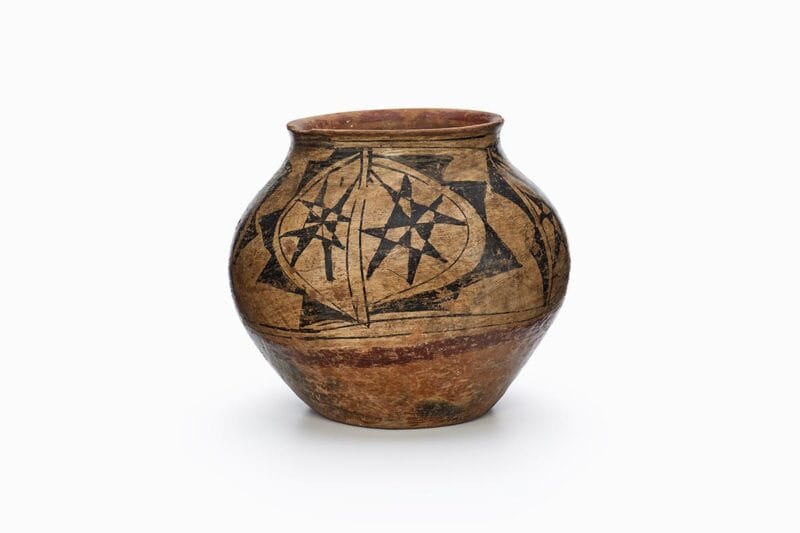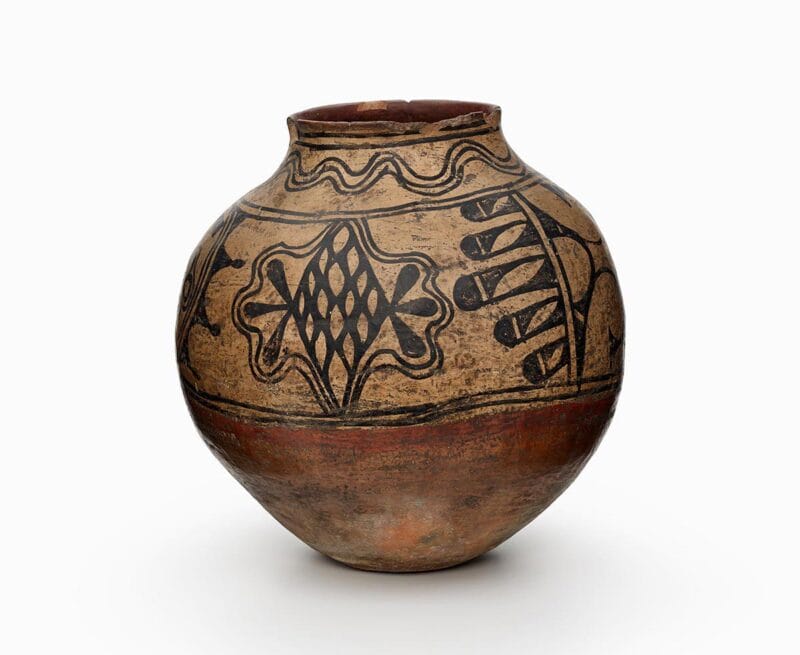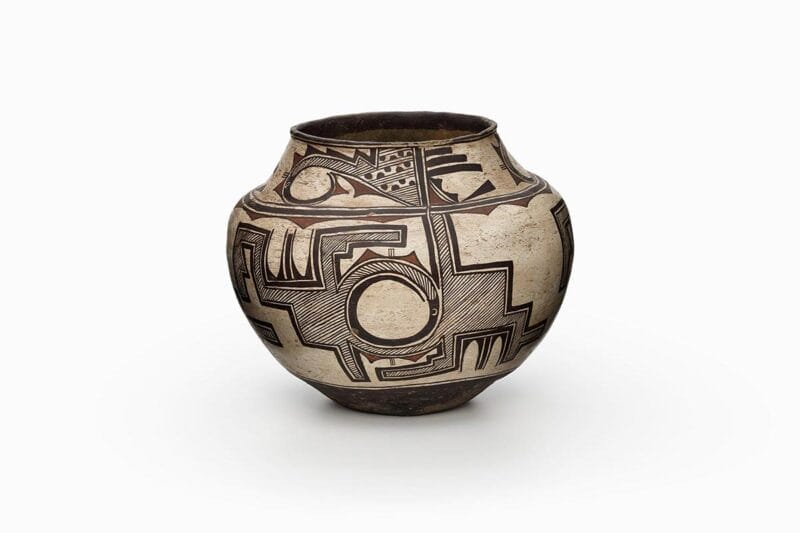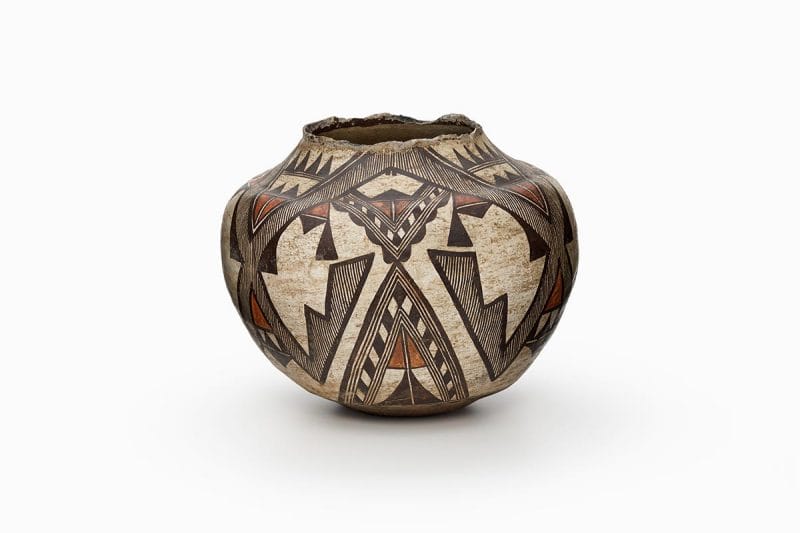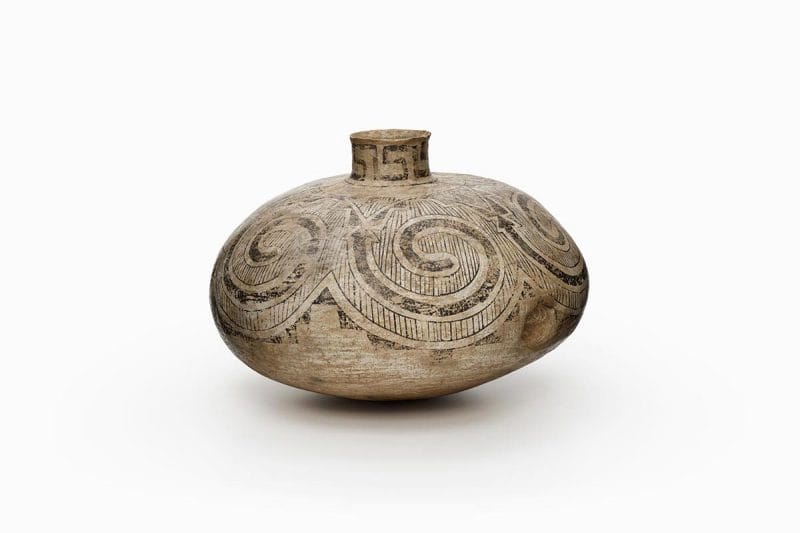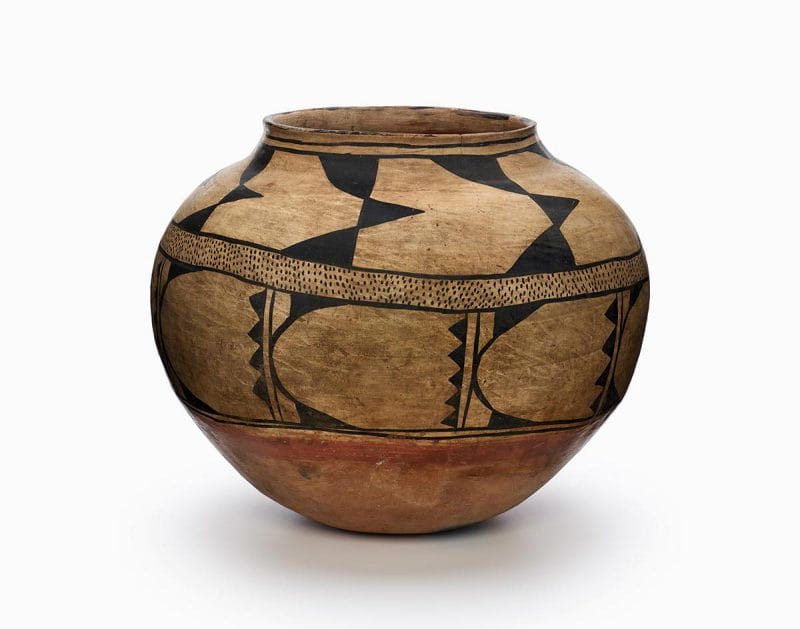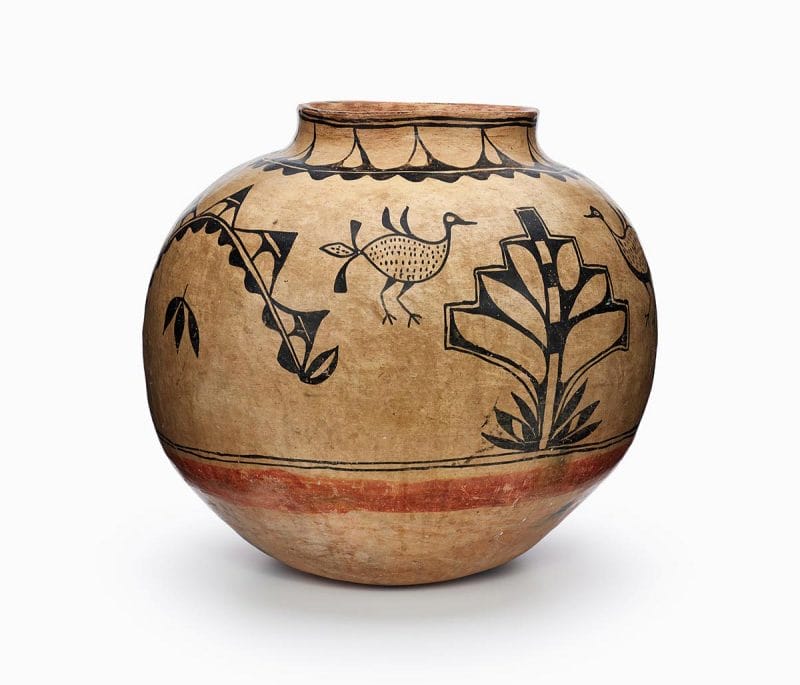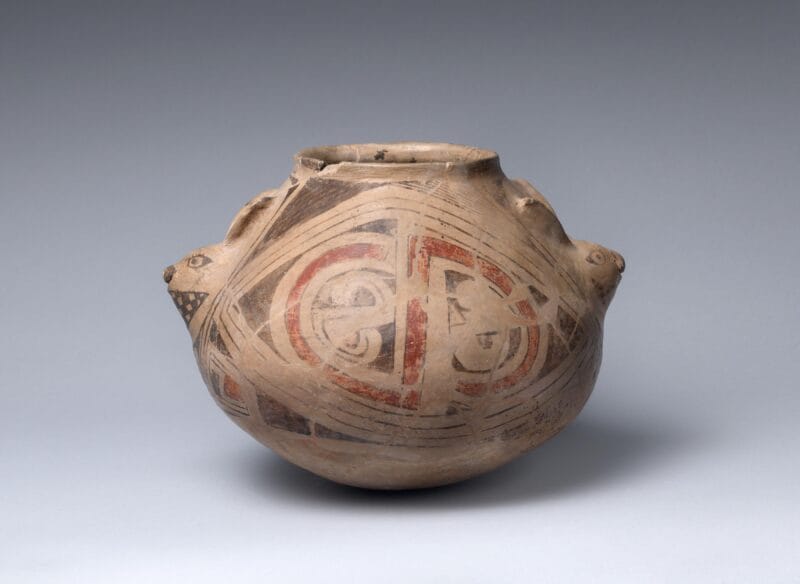
About the Object
This olla (cooking vessel) is particularly memorable for its representation of rabbit heads in effigy. The work is made of coarse polychrome on buff, or earth-toned, clay. Archaeologists have found remains of rabbits among other materials from this period, which indicates that they were raised, hunted, and traded across the Casas Grandes area for their pelts and for food. This object is an example of the elaborate polychrome ceramics created by Casas Grandes artists and dates from the medio, or middle, period.
Additional Information
Between 900 CE and 1300 CE, the Casas Grandes culture (also referred to as Paquimé or Chihuahua) expanded, eventually influencing the southwestern U.S. states of Arizona and New Mexico and the Mexican states of Chihuahua and Sonora to the eastern shore of the Gulf of California. During this era, the people of Casas Grandes built large communities, monumental adobe structures, ball courts (very likely related to the more famous Mesoamerican ball game), and other evidence of increasing social difference.
[Antique Dealer, Ranchos de Taos, NM];
The Jan T. and Marica Vilcek Collection, 1995-2010;
Gift to The Vilcek Foundation, 2010;
Related Objects
You may also be interested in
“Grounded in Clay” on Display at the Saint Louis Art Museum
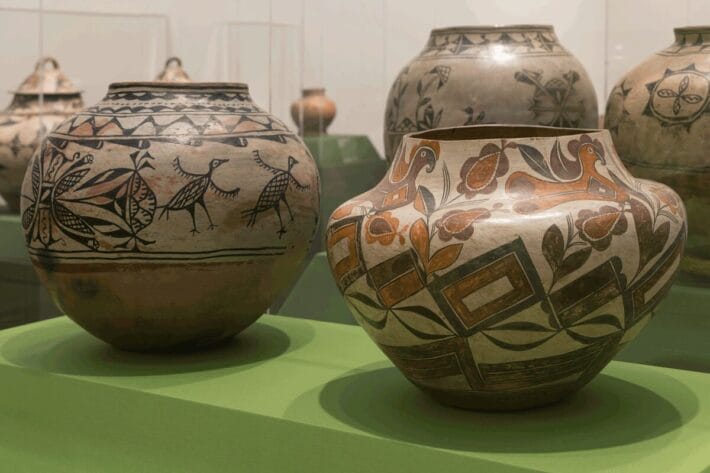
“Marsden Hartley: Adventurer in the Arts” travels to New Mexico
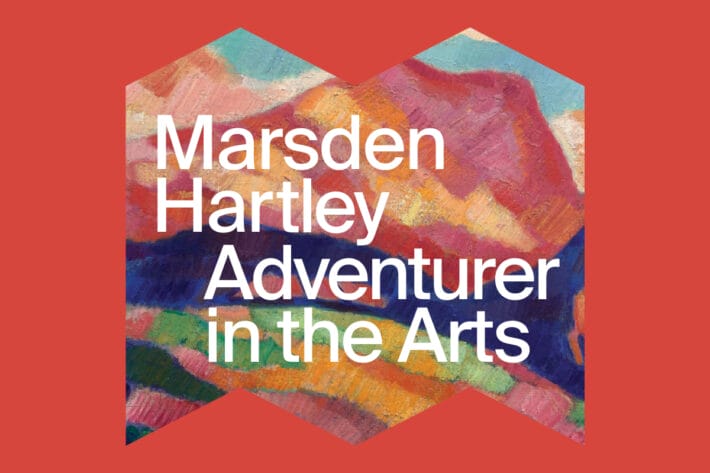
Felipe Baeza

